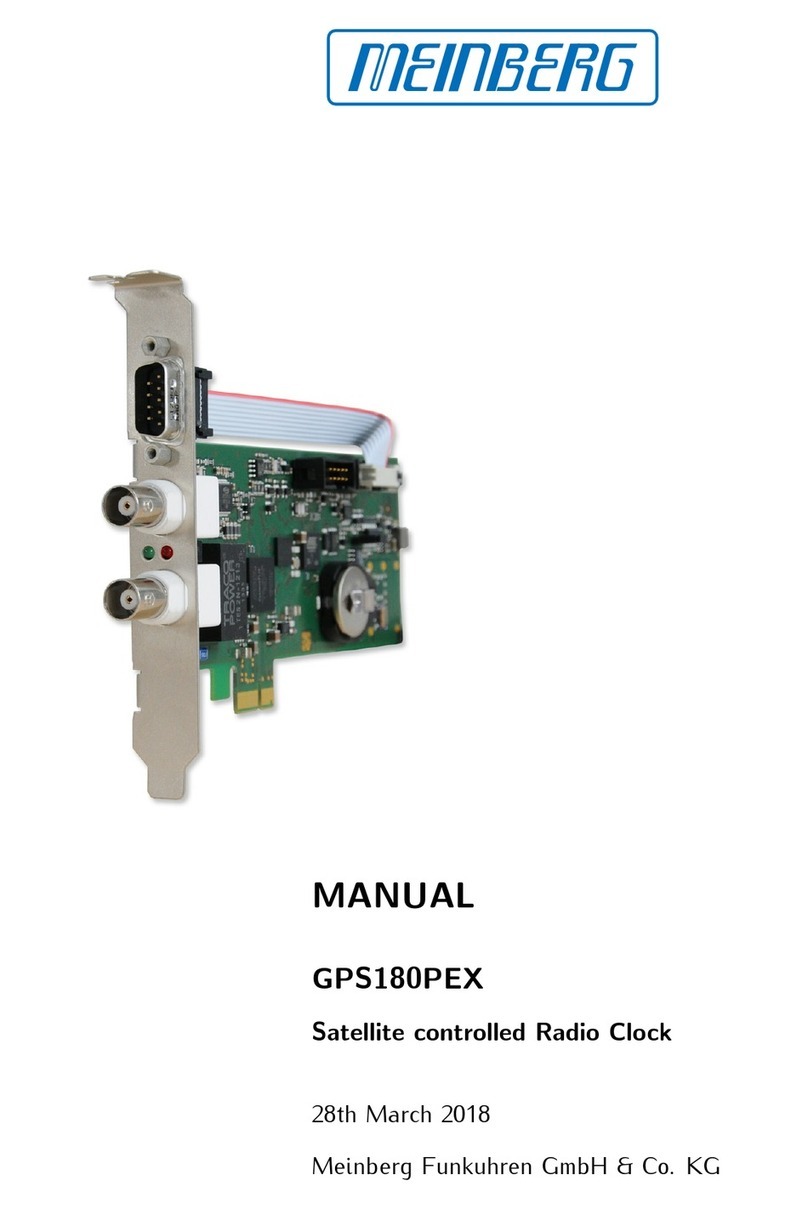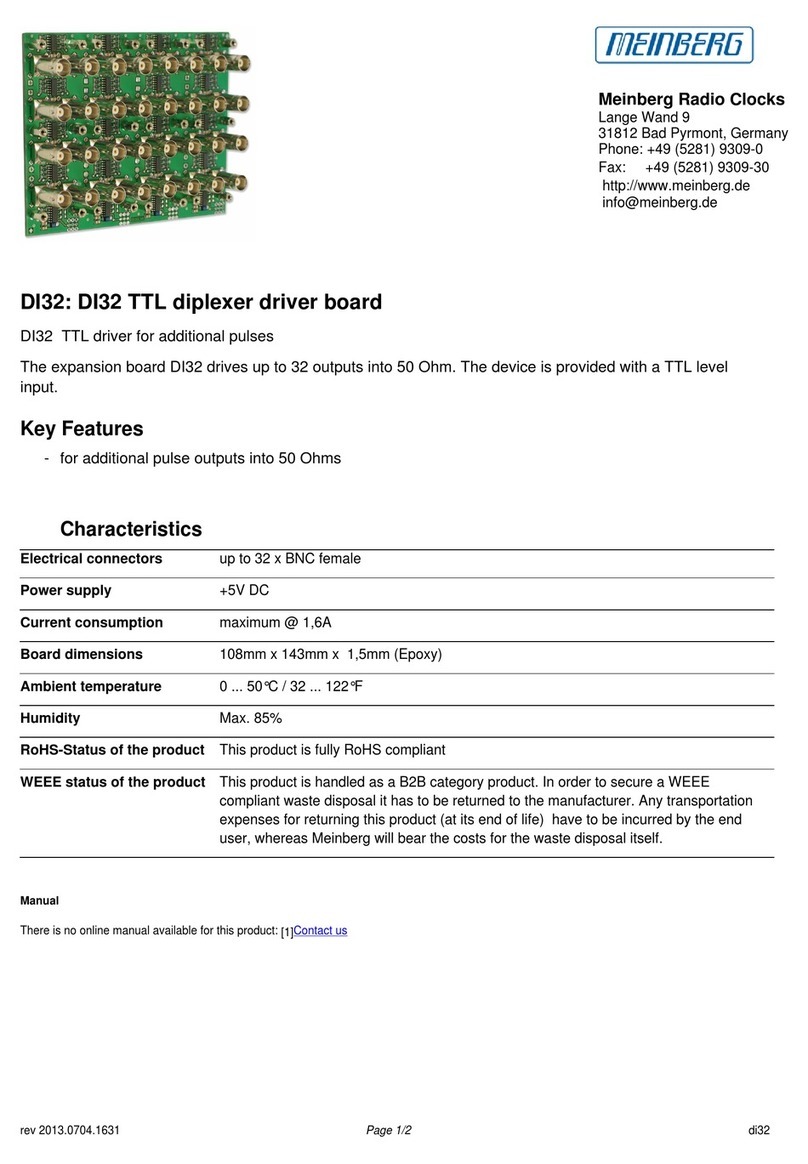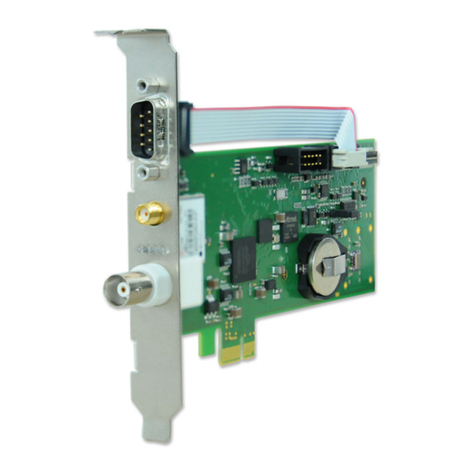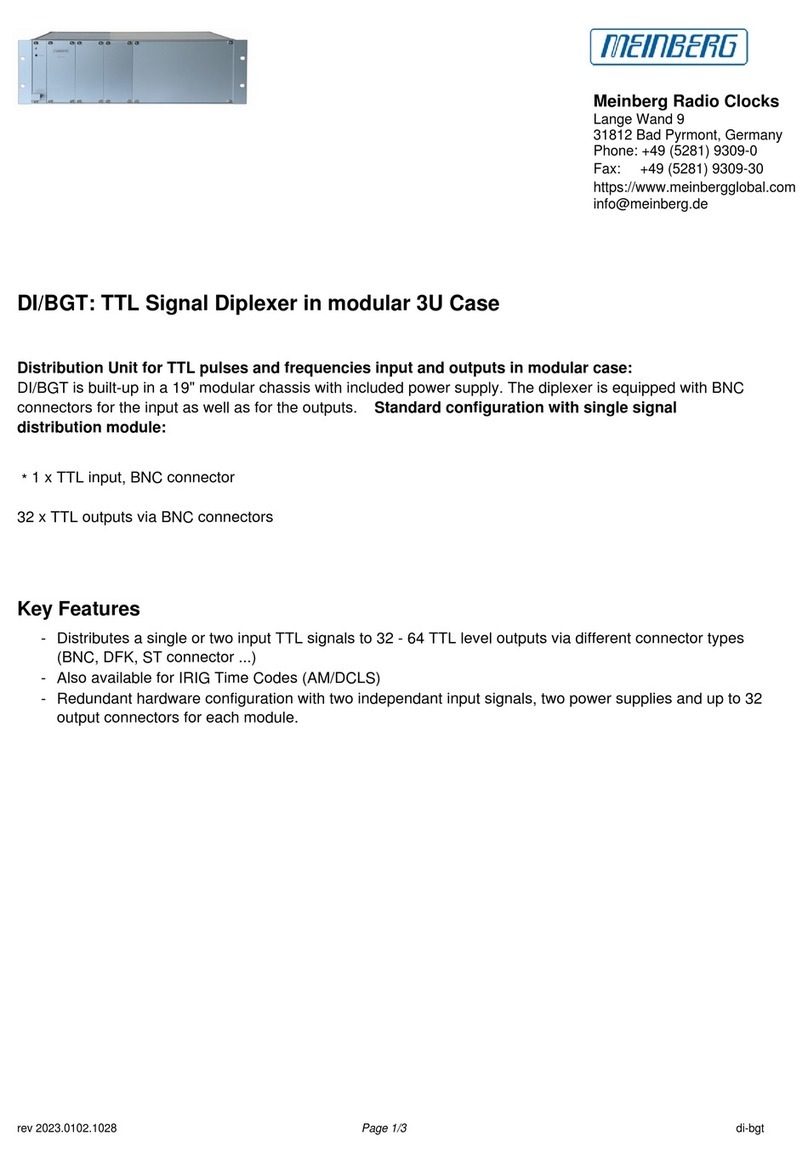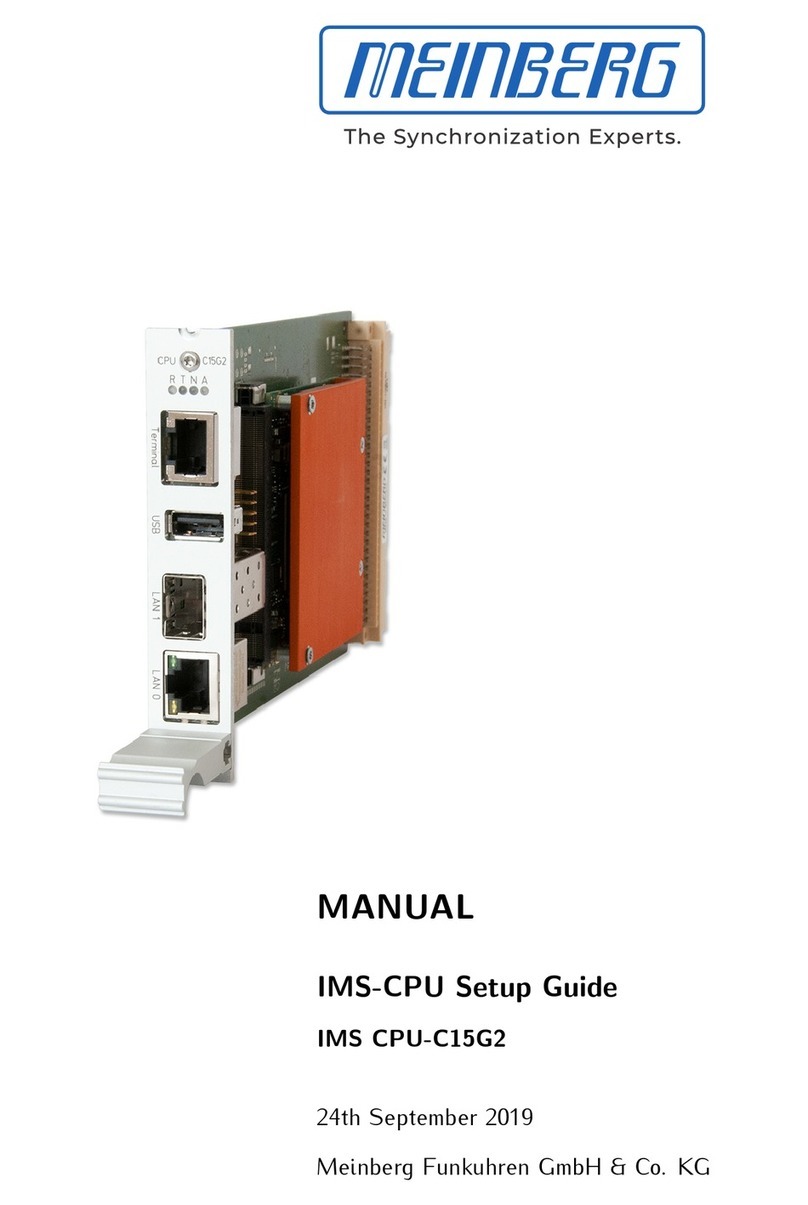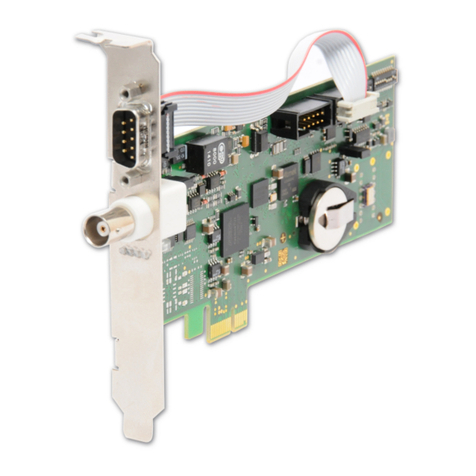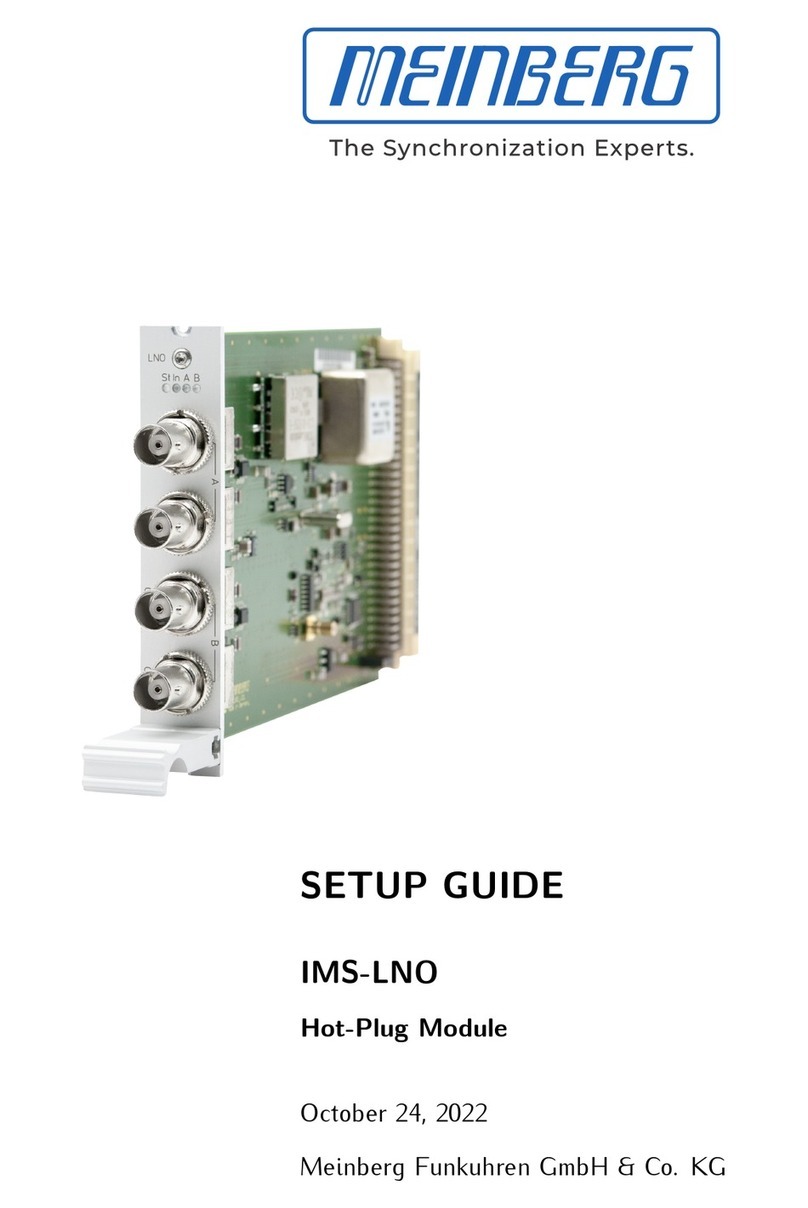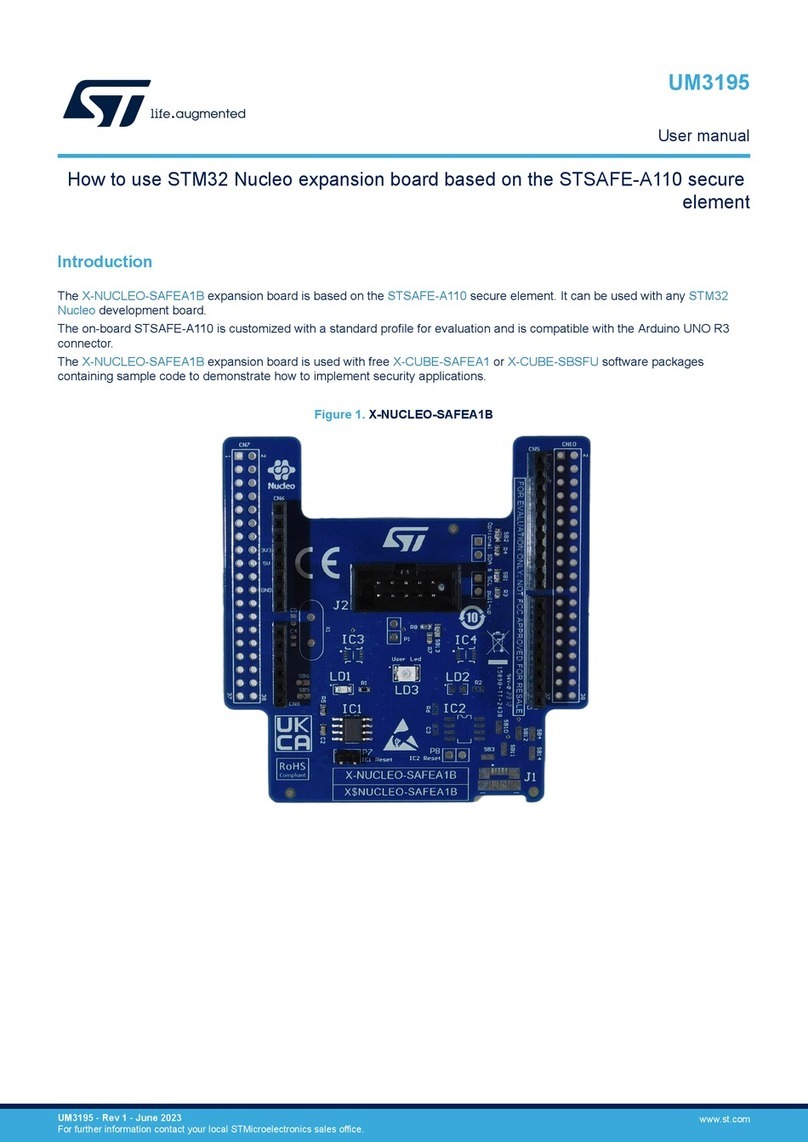9
Functional description
After the received IRIG code has passed a consistency check, the software clock
and the battery backed realtime clock of TCR510PCI are synchronized to the external
time reference. If an error in the IRIG telegram is detected, the system clock of the
board switches to holdover mode. Drifting of the internal time base and the generated
pulses (PPS/PPM) is limited to 1μsec/sec by regulating the onboard quartz of
TCR510PCI. IRIG code includes day of year information only. The complete date is
kept in the battery backed realtime clock and the software clock therefore. The
received day of year is compared to this complete date once per minute. If the board
detects a difference between received and stored date information, TCR510PCI
switches to holdover mode but still synchronizes the internal time base to the
received IRIG code.
Date and time kept in the realtime clock can be set by sending a Meinberg Standard
Time Telegram to the serial interface COM0 or via the PCI bus.
The internal system clock is always set to the received IRIG time,
which might have a local offset to UTC. Only if TCR510PCI is
configured with this offset, Meinberg driver software is able to set
the system time of the computer correctly. The serial interface
COM0 can send the Standard Meinberg Timestring with UTC or local
(IRIG) time.
IRIG telegrams don’t include announcers for the change of time
zone (daylight saving on/off) or for the insertion of a leap second.
Hence the clock will switch into freewheeling mode in case of such
event, and resynchronize afterwards.
The board TCR510PCI decodes the following formats:
A133: 1000pps, amplitude modulated sine wave signal, 10 kHz carrier frequency
BCD time of year, SBS time of day
A132: 1000pps, amplitude modulated sine wave signal, 10 kHz carrier frequency
BCD time of year
A003: 1000pps, DC Level Shift pulse width coded, no carrier
BCD time of year, SBS time of day
A002: 1000pps, DC Level Shift pulse width coded, no carrier
BCD time of year
B123: 100pps, amplitude modulated sine wave signal, 1 kHz carrier frequency
BCD time of year, SBS time of day
B122: 100pps, amplitude modulated sine wave signal, 1 kHz carrier frequency
BCD time of year
B003: 100pps,DC Level Shift pulse width coded, no carrier
BCD time of year, SBS time of day
B002: 100pps, DC Level Shift pulse width coded, no carrier
BCD time of year
AFNOR NFS 87-500:100pps, amplitude modulated sine wave signal, 1 kHz carrier frequency
BCD time of year, complete date, SBS time of day
